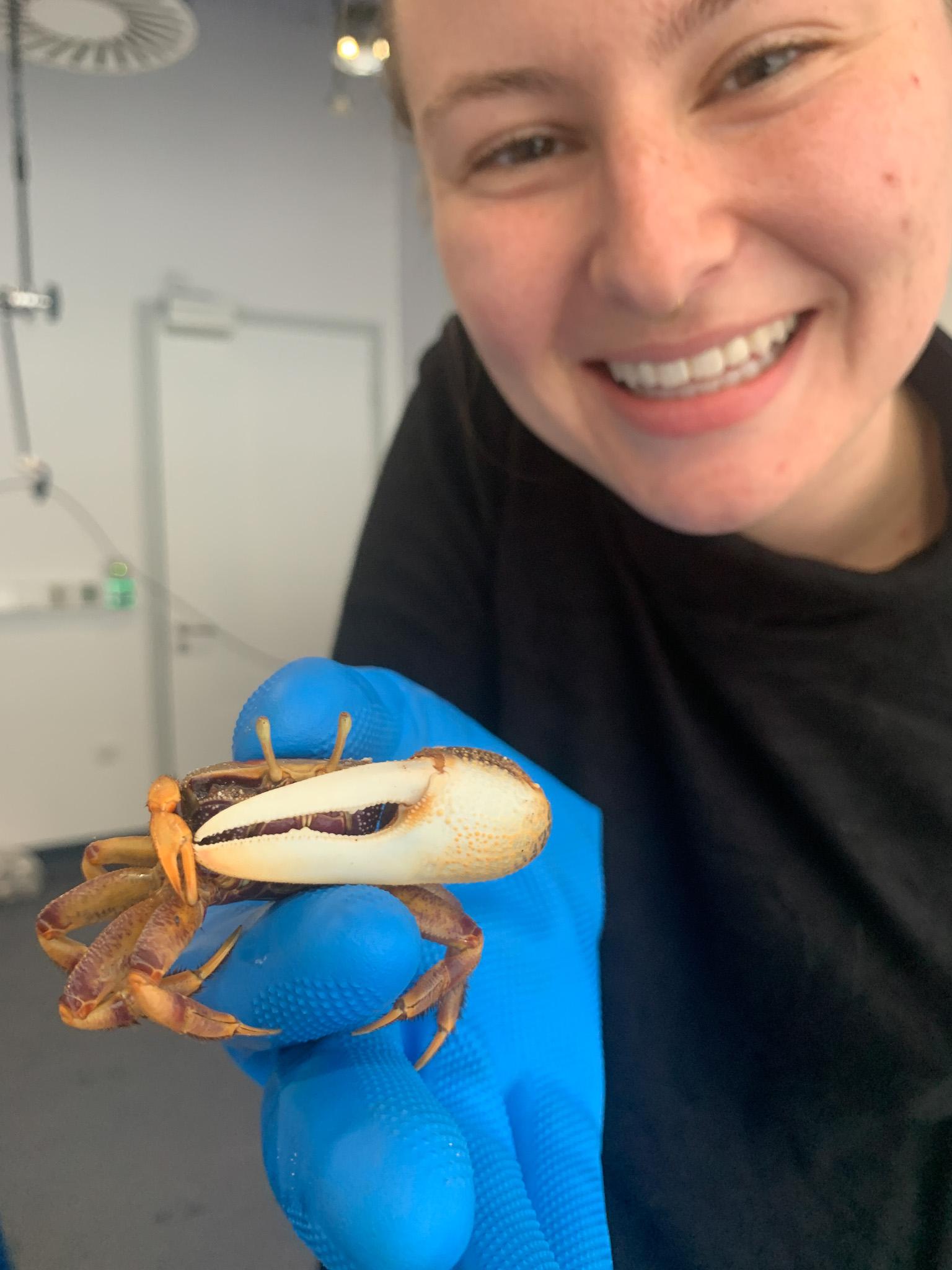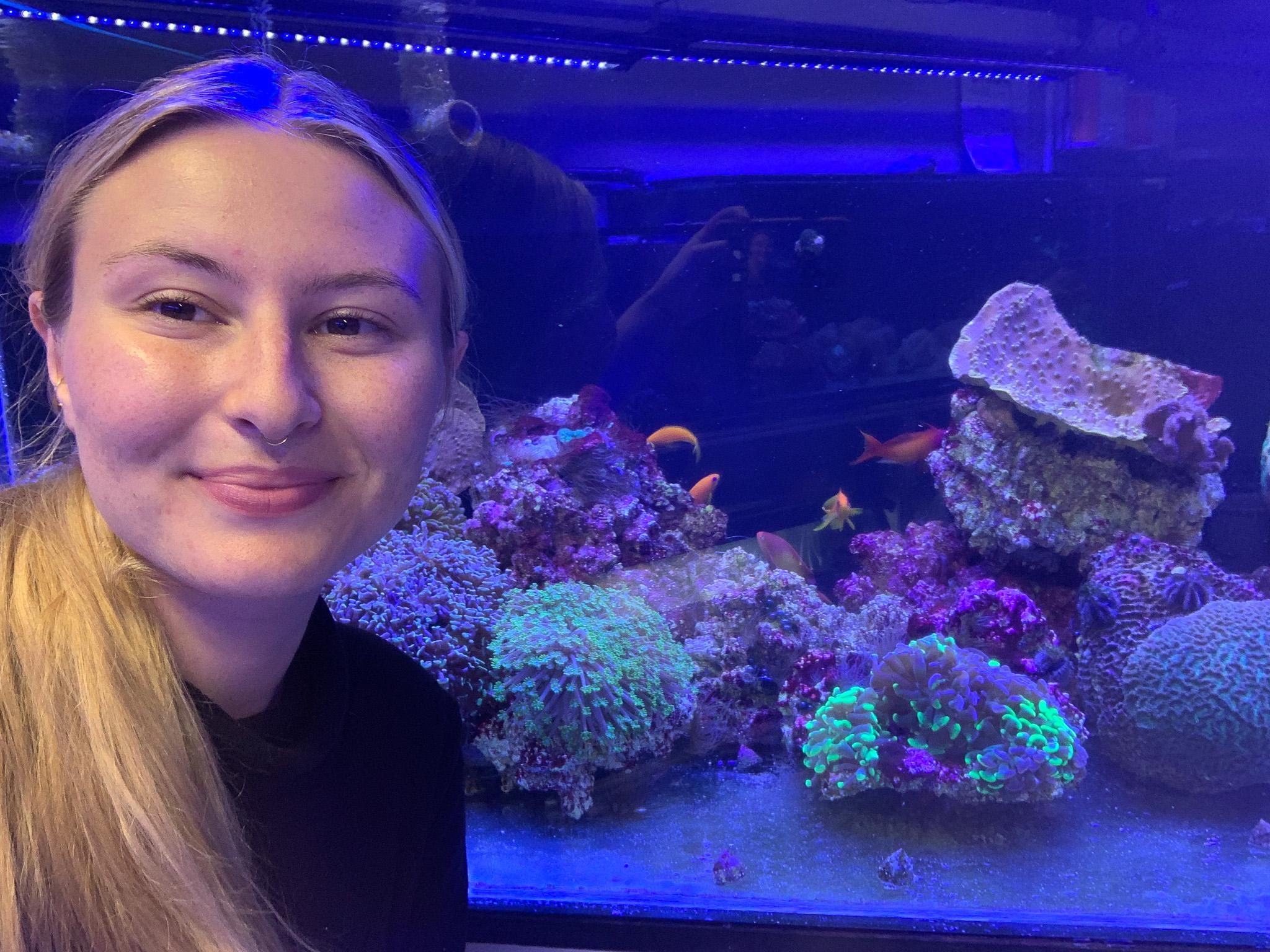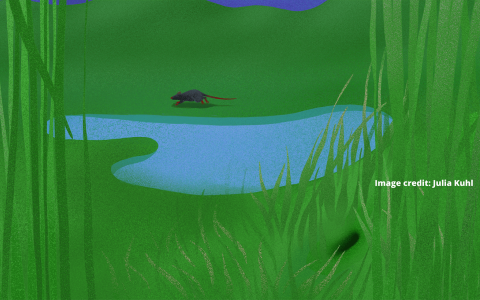
Crabitats and comparisons: a day in the life of a Research Assistant at SWC
Sanna Titus is a Research Assistant in the Branco and Margrie labs at the Sainsbury Wellcome Centre. She is studying and caring for Fiddler crabs in our aquariums, or as they have been fondly termed, “crabitats”. A marine biologist by training, she is working with her team to establish the crabs as a species for neuroscience research – specifically, one that can tell us how animals navigate the world around them.
Her focus is to understand path integration in the brain – the processes by which animals update their estimates of position or heading. She is interested in how these processes work both anatomically and electrically, with implications for machine learning and AI systems.
In this article Sanna talks to us about careers, bird impersonations, and her path to working neuroscience.
Can you describe a typical working day?
Every day is a bit different, which keeps the role exciting. Proper animal husbandry is the backbone of any successful research, so naturally this is a significant focus of my work.
We perform standard animal husbandry three days a week. This involves environmental evaluations, such as water tests and atmospheric measurements, and visual checks of individual crab health. We feed everyone and check the equipment.
Aside from standard husbandry, monthly population censuses and population intakes, one of us is always on call in case the tank leaks, our 24/7 video monitoring fails, or anything like that. Sometimes we have to pop in on the weekend to perform tank checks or feed recent arrivals.
Another element I’m working on now is creating an ethogram. That’s a list of crab behaviours – everything they could possibly get up to!

We film the crabs 24/7 in the lab, and I am going back through the past two years or so of data, where I'm using my ethogram to build an activity budget. Minute by minute, I mark down every individual crab’s identity and spontaneous behaviour. This will allow us to gain an accurate picture of what behaviours crabs exhibit and how often they perform them, as well as the degree of individual variations.
My goal with this activity budget is to have an overview of how they're behaving in captivity. Then, hopefully I can compare it to the field data to make sure they're behaving as naturally as possible. Finally, these activity budgets should allow us to build realistic expectations of activity and thoughtful design of future behavioural experiments.
Some of my day-to-day work also involves training machine-learning models to identify and track Fiddler crabs within our field footage. This is a team effort, where I help collect, edit, and label data, while a team of software engineers help build cutting-edge training pipelines.
Can you describe a non-typical day?
A couple times I have been very lucky to travel to the southern tip of Portugal to a marine laboratory research station.
We'll take what I call ‘BBC’ cameras because they're really huge, big and fancy. We set up two cameras on the mud bank where there is a population of crabs, hit record, and then we usually film for five to six hours a day. Every hour or so, I'll run behind the camera and pretend to be a bird! The crabs all disperse into their burrows, quickly navigating their way home.

They have a memory of where their burrow is at all times – that’s what we are interested in. It's a really strong association because it’s a valuable shelter, so they put a lot of energy into building this burrow and defending it. They can have relatively intricate underwater, underground connections too; some burrows even curve upwards underground, providing an air pocket for reliable respiration during high tide in the case of hypoxic seawater.
In captivity, they continue to be fabulous burrow constructors and appear to remember where their burrows are, so they are a great model to illicit path integration in the lab.
What's the best thing about your job?
I honestly love the interdisciplinary nature of it. I feel like we work with a really cool, diverse team. I'm a marine biologist, but our team is composed of a freshwater aquarist, cell-culture biologist, geneticist, microscopy specialist, software engineers, and of course, neuroscientists. I like that because we can draw in pieces of knowledge from everyone, gaining a holistic view. I really feel like at this job the world is my oyster.
Because this project is so young, it’s fun. We have the freedom to explore anything that we are really interested in. If there is a particular portion of the project that interests me, the group leaders are very supportive exploring parallel research avenues.

What are the biggest challenges?
I would say probably the same thing as the best bit! Because the world is your oyster, there are a lot of different paths to go down. We do explore some avenues and they're not successful. But that’s totally ok, we have to shift, and we have to maintain the motivation to keep exploring. We're constantly asking ourselves, is this the best path? Is this the right path? Are there other ways that we can do this?
It's a little different to other projects where you have 50-60 years of previously published research and you have access to many specialists with incredible tools and existing protocols. We don’t have that for the crabs – we’re creating those tools, and protocols and skills. It’s fun, but it’s tough for the researchers on a tight timeline.
What advice would you give to anyone thinking about marine biology as a career?
I would say be open and just do what interests you.
I became interested in science because as an 11-year-old I went to a summer camp where I was helping with cognition and physiology research in marine mammals. I was working with dolphins, elephant seals, sea lions and sea otters.
Once I entered marine biology, I realised that invertebrates are cool too! I expanded my horizons. My bachelor's thesis was in larval metamorphosis in marine invertebrates, which did not feel relevant to me at all at the time, but I’ve used that knowledge now here in my current job. I had all those skills ready to help with this research, years down the line.
Things might not seem relevant in this moment, but if they're interesting to you, anything you learn is going to be useful at some point - there's so much overlap between scientific disciplines.
You don’t need to limit yourself. I had zero training in neuroscience and I'm working in a neuroscience building!
Also, I would recommend volunteering, trying out a job by doing work experience, or working part-time somewhere. Throughout high school, undergraduate and postgraduate studies, I always had at least two side jobs. This allowed me to explore my interests and be confident on my choice in career paths. It will give you a real sense of the nuances of various jobs and the right path for you.

About Sanna
Collaborating with both Branco and Margrie labs, Sanna’s research focuses on spatial navigation throughout the phylogenetic tree. A broad taxonomic range is studied at the Zoological Society of London’s London and Whipsnade Zoos, comparing resource navigation, enclosure use and memory. Sanna is also involved in a separate project developing a research pipeline on Fiddler crab navigation and neuroscience. She is responsible for curating crabitats and maintaining captive populations of Fiddler crabs (Afruca tangeri, formerly also Paraleptuca crassipes). Acquiring behavioural video data both in the lab and in-situ (south Portugal), she employs machine learning to track animals and evaluate path integration. Her previous projects reflect this multidisciplinary and multi-species approach; beginning her research career examining cognition and vision processing in Cetaceans and Pinnipeds, she transitioned throughout her BSc at the University of Washington to study marine invertebrate larval metamorphosis, chemistry, and vocal learning in zebra finches. For her MSc at the Royal Veterinary College, she entered the world of zoo research and conducted her dissertation on the epidemiology and effects of management on elephant endotheliotropic herpesvirus (EEHV) excretion in Asian elephants. Her other research interests include genetics, wildlife management and welfare.


